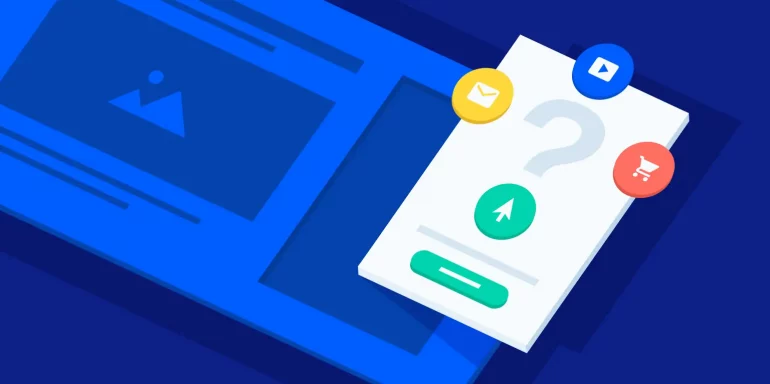In digital marketing, we talk a lot about conversions. So much so that you probably feel like an expert from having heard the term so often, but in reality, most of us could use a refresher.
What is an advertising conversion?
A conversion refers to an action that a prospective customer takes on your website or landing page to further interact with your business or product. . Technically, this can be any desired goal or action a visitor takes, but there are a few types of valuable conversion types that commonly stand out.
Let’s take a look at the four most common types of advertising conversions and when to use them:
1. Lead conversions
Used as part of a lead-generation campaign, lead conversions are used to identify customers interested in your offering and provide a means for furthering the relationship. This typically means they’ve provided their contact info in exchange for an offer. Lead generation is the most commonly used of all conversion types.
When to aim for the lead
Lead conversions are most appropriate for higher-cost products and services. They’re strategically valuable for offerings that require intensive information and consideration before customers can come to a purchase decision.
2. Click-through conversions
As the name suggests, this means a person has clicked your ad and arrived at your post-click landing page, where they will begin to evaluate your content. A conversion in this case means that they click your CTA button. Typically this will take them to another post-click landing page, with the goal of eliciting a higher value conversion, such as signing up for a trial or making a purchase.
When to aim for the click-through
Use the click-through as a warm-up act to present your value proposition before pressing for the sale.
3. Video view conversions
This refers to a conversion goal in which the user views a certain amount of a video. This could be as little as 3 seconds, in the case of Instagram and Facebook videos, or 11-30 seconds on YouTube.
When to aim for the video view goal
Video view conversions are a little different from the other types because they don’t culminate in a lead or a sale, however they can be valuable at every stage of the funnel. At the top, they’re great for introducing an unknown brand or figurehead; in the middle, for providing educational content; and at the bottom, for proving your effectiveness through case studies and testimonials. Ultimately, they serve to confirm that some amount of awareness was brought to your brand or offering.
4. Purchase/sale conversions
This conversion refers to any action that leads to the exchange of money for goods or services. It is the end goal that typically occurs at the bottom of the funnel, after the prospective customer has moved through the buyer journey and been nurtured to the point that they’re comfortable making a purchase.
When to go for the sale
While all sales occur at the bottom of the funnel, not all funnels are the same size. So when to use the purchase or sale type conversion depends on your business and industry. B2B funnels tend to be long, for example, because of the cost of the product or service and complexity of decision making; whereas many types of B2C funnels can be very short, in the case of inexpensive offerings, so going for the sale immediately is a tactic frequently applied by e-commerce and retail brands.
How to drive more conversions
There are two parts to this equation: The first part is everything that happens before the click—this is your audience segmentation, targeting strategy, ad messaging and creative, and platform strategy—the goal is to drive as many of the right type of visitors to your landing page as you can. This is the part that marketers frequently focus the majority of their effort and budget on getting right.
The second part is what happens after the click—this is the user experience, headline, content strategy, page design, offer and CTA—the goal is to get as high a percentage of your visitors to convert as possible. Getting this part right allows you to make your ad dollars go farther. You can learn more post-click conversion rate optimizations here.
Ready to start pairing your knowledge with landing page optimization?
We know how hard it can be to start optimizing your ad campaigns and landing page conversions. Instapage can help. We offer three different plans to help take the stress out of building, optimizing, and converting—helping you to create better landing pages and see better results. Sign up for an Instapage 14-day free trial today.

Try the world's most advanced landing page platform with a risk-free trial.
